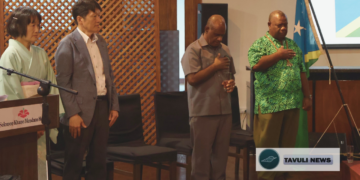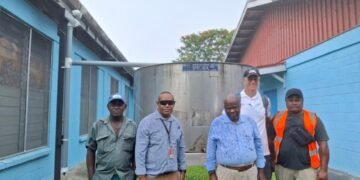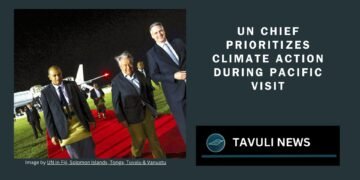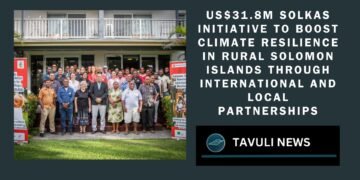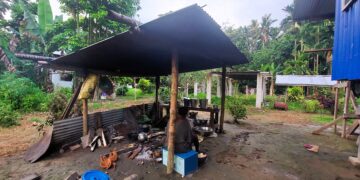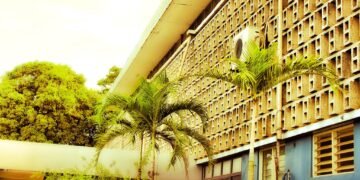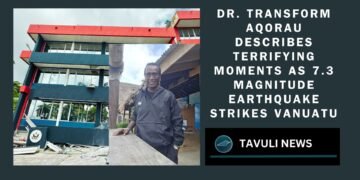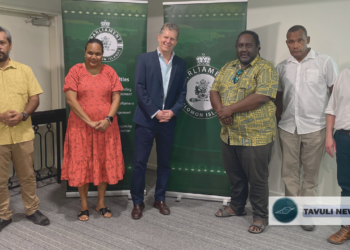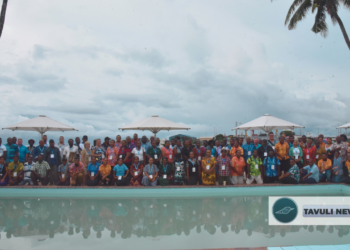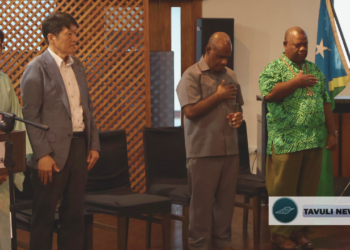SOL2023 brings opportunities and risks, highlighting the importance of strategic planning for Solomon Islands’ future
Under the inspirational motto “Challenge, Celebrate, Unite,” 5,000 elite athletes from 24 countries and territories across Oceania gathered in Honiara between November 19 and December 2, 2023, to compete in the XVII Pacific Games, also known as SOL2023. This grand event, featuring 24 sports across 12 venues, marked the largest gathering of its kind ever hosted in the Solomon Islands. It was heralded as a significant opportunity for the country to attract investment, upgrade infrastructure, and elevate its regional sporting presence.
Beyond the electrifying display of sporting excellence and the fostering of warm ties among the peoples of the Pacific, SOL2023 also provided a chance for nation-building in a post-conflict society. It united Solomon Islanders with a sense of common belonging and oneness.
Economic Pros and Cons
However, SOL2023 came with both significant economic benefits and notable risks. A sector-by-sector analysis, based on available information and interviews with major stakeholders, reveals that while there was a moderately-sized, transitory consumption boost, the true legacy of the Games lies in the infrastructural upgrades it facilitated. These upgrades were either directly linked to the event or catalytically inspired by it. At the same time, the Games resulted in a substantial deterioration in the Government’s financial standing and a considerable diversion of public funds away from productive sectors.
Financial Breakdown
The cost of hosting SOL2023 in Honiara over the five-year preparation period is estimated at SB$2.38 billion (AU$428 million). Development partners provided SB$1.49 billion (AU$267 million), the Solomon Islands Government (SIG) financed SB$0.85 billion (AU$153 million), and the remaining SB$45 million (AU$8 million) came from Games-related revenue, such as licensing and ticketing.

Infrastructural Investments
SOL2023 triggered a historic surge in infrastructural investment in the Solomon Islands, totaling SB$1.94 billion (AU$349 million). This includes both SOL2023-related partnerships and several infrastructure projects that, while not directly aimed at the Games, saw efforts focused and timelines explicitly aligned to complete ahead of the event. This ‘catalyst’ effect included a new Japanese-sponsored international airport terminal, major upgrades to the Kukum Highway, and improvements to water, sewage, and telecommunication infrastructure.
Sectoral Impacts
Manufacturing and Services: The manufacturing sector saw moderate, unevenly distributed spill-over benefits. Some enterprises, especially sponsors and official suppliers, reported significant revenue increases, while others saw little to no impact. The influx of visitors during SOL2023 provided a revenue windfall to the services sector, with hotels, lodges, and restaurants across Honiara reporting unprecedented revenue surges and full occupancy.
Agriculture: The agricultural sector, a crucial source of livelihood for the majority of Solomon Islanders, received minimal benefits from SOL2023. Most of the increased demand was met through imports, with only fruits, root crops, and some meat products sourced domestically. This revealed deep geographical asymmetries in the distribution of benefits, as the urbanized capital city received most of the infrastructural and monetary stimulus, not the rural provinces.

Employment and Fiscal Impact
SOL2023 created approximately 10,000 formal-sector jobs, including 3,000 volunteer positions, over five years. However, the Games also proved unfavorable to many micro-entrepreneurs, as informal roadside markets were disbanded during the event, affecting the livelihood of low-income vendors.
SIG bore slightly more than one-third of the total cost, resulting in a widened fiscal deficit, which more than doubled to SB$950 million (AU$171 million, 7% of GDP). SIG debt surged to 21.5% of GDP, up from 16.3% in 2022. Several line ministries faced significant budget cuts, payment delays, and scaled-down operations due to resource diversion towards SOL2023.

Conclusion
While SOL2023 achieved its key goals and provided a sorely needed boost to infrastructure, especially in the capital, the longer-term implications of a rapidly deteriorating fiscal balance and atrophied investment in other sectors remain to be seen. The need for a long-term strategy for the use of the facilities, maintenance, and public accessibility is critical to ensure that the benefits of SOL2023 can be enjoyed by future generations.
The historic SOL2023 experience revealed both the merits and limitations of a development strategy grounded in extensive investment into a single sector. As the Solomon Islands moves forward, the far-sightedness of its authorities will determine whether the fruits of SOL2023 will lead to sustained national development or become a cautionary tale of missed opportunities.
This analysis was first distributed by Griffith University as a research article by Ms. Angeline B. Rohoia, a Senior Monetary Policy Analyst within the Economics, Research, and Statistics Department (ERSD) of the Central Bank of Solomon Islands (CBSI). Ms. Katie Longe’au, a Senior Government Finance Sector Analyst within the ERSD of the CBSI, and Mr. Marco Malusà a Senior Research Analyst within the ERSD of the CBSI. The original version can be accessed here: https://blogs.griffith.edu.au/asiainsights/a-games-economy-the-economic-impact-of-hosting-the-pacific-games-sol2023/



